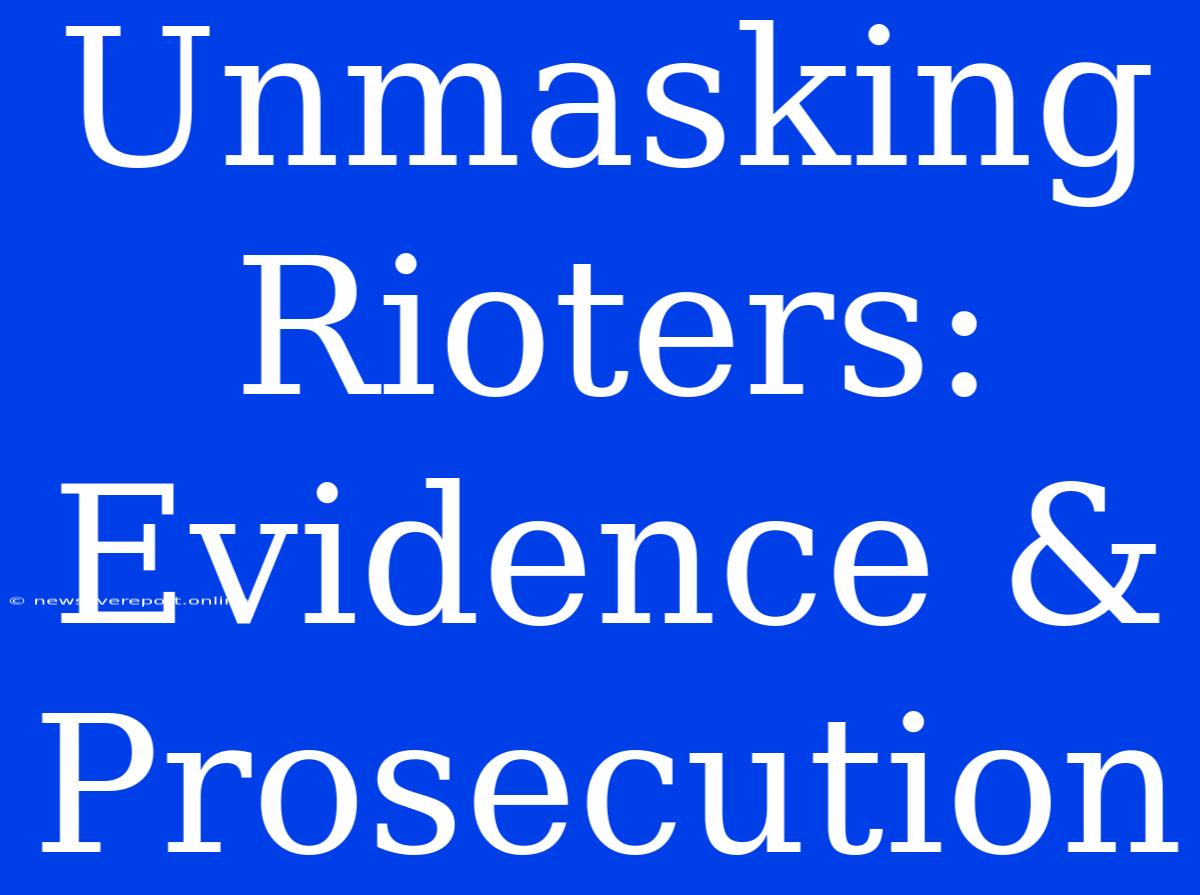Unmasking Rioters: Evidence & Prosecution
The recent surge in rioting and civil unrest has brought a renewed focus on the challenges of identifying, prosecuting, and holding accountable those responsible. While the right to peaceful assembly is fundamental, violence and destruction are not. This article delves into the evolving landscape of evidence gathering and prosecution strategies in the face of rioting.
Challenges of Evidence Gathering
The swift and often chaotic nature of riots poses unique challenges for investigators seeking to identify perpetrators:
- Anonymity: Rioters frequently disguise themselves with masks, hoodies, and other concealing attire.
- Large crowds: Amidst large, volatile gatherings, individual actions can be difficult to isolate and document.
- Digital footprints: While social media can be a source of evidence, posts are often quickly deleted or made anonymous.
- Limited resources: Police departments often face budget constraints and staffing shortages, making comprehensive investigations difficult.
Evidence Gathering Techniques
Despite the obstacles, law enforcement agencies are employing a range of methods to gather evidence and identify rioters:
- Surveillance footage: Public and private security cameras, as well as drone footage, can provide valuable visual documentation.
- Social media analysis: Forensic experts can track user activity, analyze images, and identify suspects through social media platforms.
- Cell phone data: Law enforcement can obtain warrants to access geolocation data, text messages, and call records to pinpoint suspect locations.
- Crowd-sourced information: Tip lines, reward programs, and citizen submissions can provide valuable leads and eyewitness accounts.
Prosecution Strategies
Prosecution of rioters faces its own set of hurdles:
- Differing legal definitions: Laws governing riotous behavior can vary widely by jurisdiction, making legal arguments complex.
- Burden of proof: Proving individual guilt in a large group can be challenging, requiring strong evidence and witness testimony.
- Political considerations: Prosecution of riots often attracts public debate and scrutiny, potentially influencing judicial decisions.
Emerging Trends in Prosecution
New trends are emerging in the prosecution of rioting:
- Enhanced collaboration: Law enforcement agencies are sharing resources and information to build stronger cases.
- Focus on leaders: Prosecutors are targeting individuals perceived to have organized or incited violence.
- Increased use of technology: Artificial intelligence and facial recognition software are increasingly used to analyze footage and identify suspects.
Moving Forward
Effectively combating rioting requires a multifaceted approach:
- Preemptive measures: Proactive policing, community engagement, and addressing underlying social issues can help prevent rioting in the first place.
- Technology investment: Law enforcement agencies need adequate resources and access to modern technology for evidence gathering and analysis.
- Fair and transparent prosecution: Prosecutors must pursue justice while respecting due process and upholding the rule of law.
The challenges posed by riots are complex and evolving. However, by leveraging technology, fostering collaboration, and implementing comprehensive strategies, law enforcement and legal systems can better protect public safety and hold those responsible accountable.

